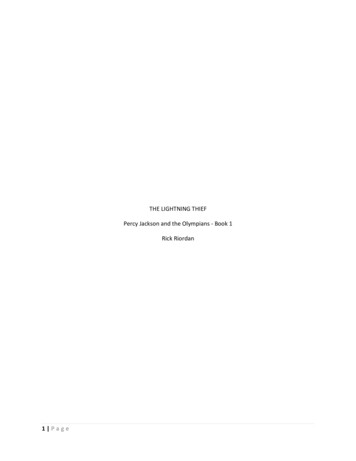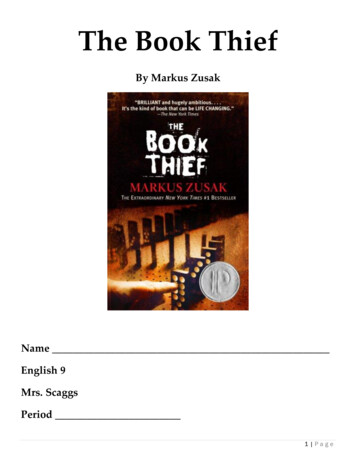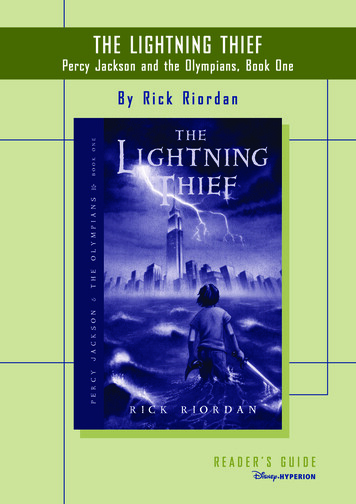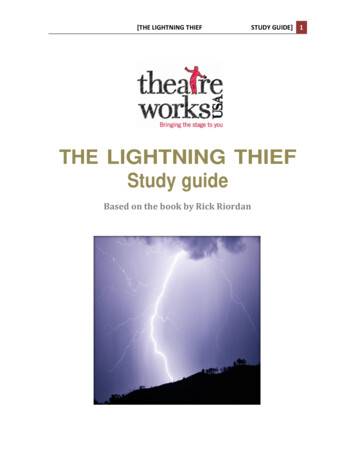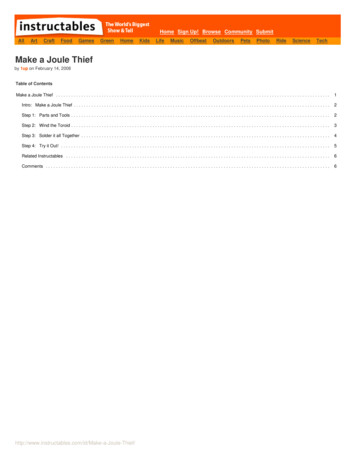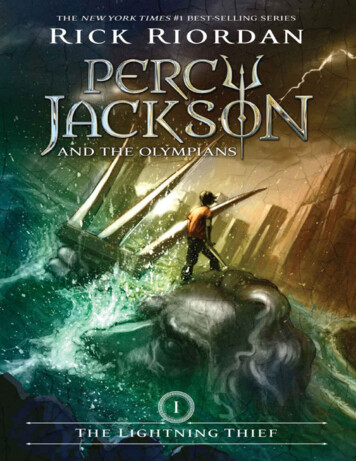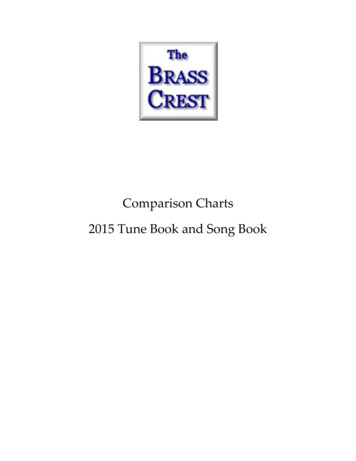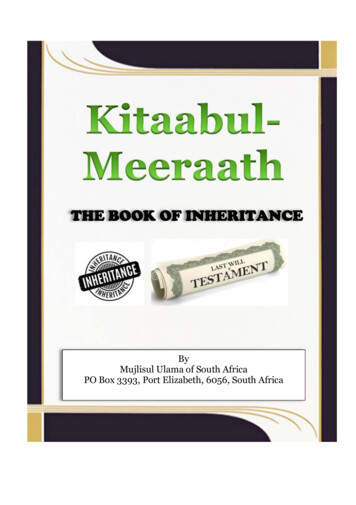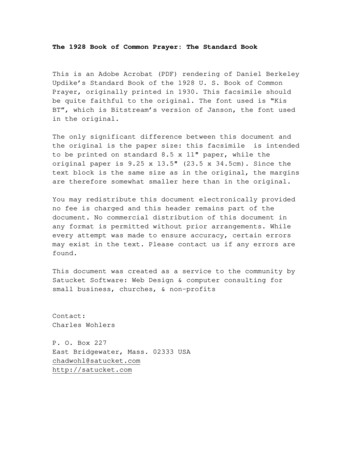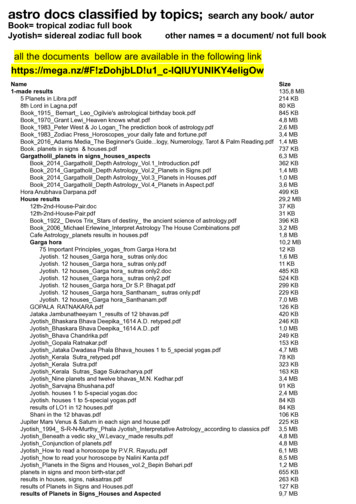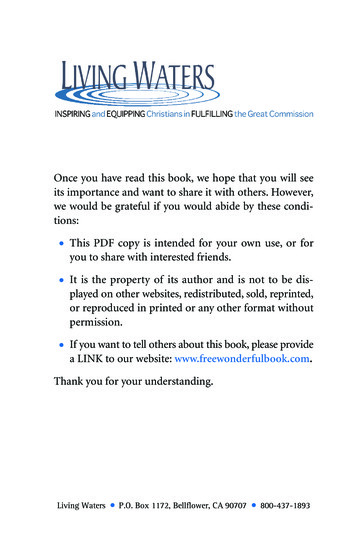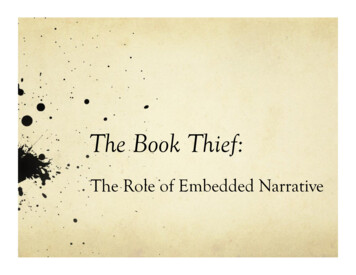
Transcription
The Book Thief:The Role of Embedded Narrative
! Earlier this term, we discussed EmbeddedNarrative and how it tends to work withinadolescent literature: As a hidden adult.! The primary example we turned to wasfound in Blume’s Forever whenKatherine’s mother gives her thefollowing article: “What about the right tosay ‘no’?” (102).
!The article went on to list the following questions:!“1—Is sexual intercourse necessary for therelationship?!2—What should you expect from sexual intercourse?!3—If you should need help, where will you seek it?!4—Have you thought about how this relationship willend?”What emotion surfaces in the reader when seeing this?What emotion surfaces for Katherine?What is the importance of the hidden adult here?
! The Book Thief, on the other hand, is abook that features numerous embeddednarratives; in fact it is a book that nearlyhinges on the presence of theseembedded narratives and their effect onthe characters, particularly Liesel.! What would our reaction be to Forever ifthere were over 25 embedded narrativeswithin it?
The Big Question:!What is the role of the embedded narrativein The Book Thief?!71—“She saw it but didn’t realize until later,when all the stories came together. Shedidn’t see him watching as he played, havingno idea that Hans Hubermann’s accordionwas a story. In the times ahead, that storywould arrive at 33 Himmel Street in theearly hours of morning, wearing ruffledshoulders and a shivering jacket. It wouldcarry a suitcase, a book, and two questions.A story. Story after story. Story within story.”
!74—“The day of the announcement, Papa was luckyenough to have some work. On his way home, he pickedup a discarded newspaper, and rather than stopping toshove it between paint cans in his cart, he folded it up, andslipped it beneath his shirt. By the time he made it homeand removed it, his sweat had drawn the ink onto his skin.The paper landed on the table, but the news was stapled tohis chest. A tattoo. Holding the shirt open, he lookeddown in the unsure kitchen light.‘What does it say?’ Liesel asked him. She was lookingback and forth, from the black outlines on his skin to thepaper.‘Hitler takes Poland,’ he answered, and HansHubermann slumped into a chair.
!381—“A voice played the notes inside her. This, itsaid, is your accordian.The sound of the turning page carved them in half.Liesel read on.For at least twenty minutes, she handed out thestory. The youngest kids were soothed by her voice,and everyone else saw visions of the whistler runningfrom the crime scene. Liesel did not. The book thiefsaw only the mechanics of the words—their bodiesstranded on the paper, beaten down for her to walkon. Somewhere, too, in the gaps between a periodand the next capital letter, there was also Max.”
!444—450—TheWord Shaker: Liesel—I almost scribbledthis story out. Ithought you mightbe too old for such atale, but maybe noone is. I thought ofyou and your booksand words, and thisstrange story cameinto my head. Ihope you can findsome good in it.
from Kidd’s Article!“Ratherthan coming to terms with trauma, shesays, we pass trauma along to the next person(here, the next theorist), keeping traumaunconscious and always moving. Caruth sees thistransmission as an enabling sort of anxiety ofinfluence (and in fact she thanks Harold Bloom inher book's acknowledgements). Such transmissionis not just productive; it's also ethical, in herview . For Caruth, the impossibility of sufficientresponse to and representation of trauma is itselftraumatic, and inaugurates an ethics of collectivememory and cultural work.”
!Is it possible that the embedded literature in this novel, if notin all novels, serves a dual purpose? That it both creates depthand richness while simultaneously allowing an escape?In this book, we have a story told by Zusak, but it is told by a veryprominent narrator, Death. Death, in turn, tells Liesel’s story through aclose 3rd person P.O.V. Within Liesel’s story we get snatches of the booksLiesel reads and the stories Liesel hears. Then, finally, we get the storyLiesel writes. It is through this book that Death knows her story so well.Liesel has transferred her trauma onto Death, who prefers to be (or simplyknows enough about his profession to try to remain) unaffected.ZusakDeathLieselBooks Liesel readsBook Liesel writes
! Look at one of the following pages which features anembedded narrative, or refer to an embeddednarrative to see the role that that particular narrativeplays:!77, 86, 147, 181, 213, 223-226, 249, 279, 323, 328, 354,359, 398, 418, 433, 444-450, 473, 504, 512, 519,525-528.!What is the reaction to this embedded narrative?(Either in the novel or in your reading of it.)!In what context is it found?!What does it contribute to the depth of the book?Create an escape?
Dr. Tarbox’s Question:! Transference of trauma from the text tothe reader so that the reader becomesboth witness and actor?!When Liesel learns Max’s story, does she not becomeboth a witness and an actor within it?
from Kidd’s Article!“These stories are effective precisely to the degree thatthey capitalize on our conviction that historical traumashould be personal, in ways that are often surprising orunpredictable. Although I don't know enough aboutthe genre, my sense is that historical fiction for childrenhas become more than ever a metadiscourse ofpersonal suffering that in turn demands pain fromreaders as proof of their engagement.” (Emphasis Dr.Tarbox)
A Dr. Tarbox Question: “What makesthis subject/thesis/book important?!Liesel’s lifeThe Gravedigger’s Handbook, The Word Shaker, The StandoverMan, The Whistler, The Last Human Stranger, DudenDictionary!Our lives with The Book Theif: This is a narrative nowembedded within our lives.Dick and Jane, War and Peace, Love in the Time of Cholera, TheBook Thief, Where the Red Fern Grows, etc.
The book thief saw only the mechanics of the words—their bodies stranded on the paper, beaten down for her to walk on. Somewhere, too, in the gaps between a period and
